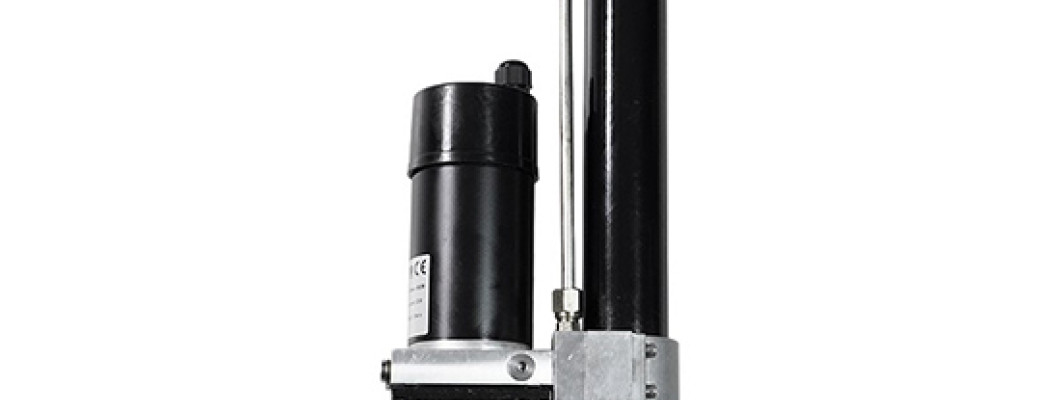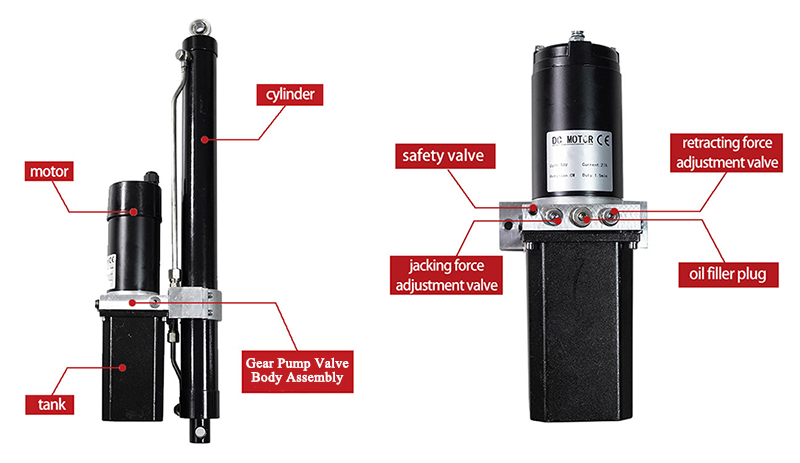
An electric hydraulic actuator is a combination of electric and mechanical properties that converts electrical energy into motion through the assembly of an electric motor, gearbox, oil reservoir tank, oil filter, relief valve, safety valve, jacking force adjustment valve, retracting force adjustment valve and linear actuator cylinder. Electric hydraulic actuators such as electric hydraulic linear actuators are used in versatile applications to handle loads in marine, aerospace, automobile, construction, and many other industrial fields.
The size of the hydraulic electric linear actuator depends on stroke length, retraction speed, maximum load, installation process, and supply voltage. Increasing the speed and load requirement will increase the price of the actuator.

Working of the Electric Hydraulic Actuator
This actuator consists of an electric gear motor, a hydraulic unit, and a linear actuating cylinder. The system will perform the stroke extension and retraction process.
During the stroke extension process, the electric motor rotates in the clockwise direction to pressurize the hydraulic fluid, which results in the opening of the valve to draw the fluids from the reservoir and head side. This drawn fluid enters into the rod piston for the rod extension.
During the retraction process, the electric motor rotates in an anticlockwise direction to reverse the operation and return the supplied fluids to the reservoir.
Advantages of the Electric Hydraulic Actuator over Hydraulic Actuators
- Power Density: The power density of an electric hydraulic actuator is high compared to a hydraulic actuator and an electric linear actuator having the same size and weight.
- High Precision and efficiency: Electric hydraulic linear actuator offers much higher precision and accuracy. It is easy to scale up this type of actuator for higher capacity, and multiple networks. Such actuators are easy to customize for the required speed and stroke length. Whereas such options are not available in the hydraulic cylinder actuators.
- Low Noise: Electric hydraulic linear actuators are operated with an electric source, so the noise level is low in such actuators.
- Design Flexibility: Such small hydraulic linear actuators are not connected to any hydraulic unit externally to supply pressurized fluids which makes it highly flexible and easy to design for any application. Hydraulic cylinder actuators are required to connect externally through hoses, pipes, hydraulic units, etc.
- Low Maintenance: There is no leakage in the electric hydraulic linear actuator. So, frequent maintenance is not needed. Whereas the hydraulic cylinder actuator is connected to the hose, pipe, etc. So, frequent maintenance is required.
- Cleanliness: Hydraulic actuators and their components are easy to develop leakage in the pipe, and hose fittings that result in slipping hazards. The leakage possibility in an electric hydraulic linear actuator is almost null.
Peaco Support supplies various electric hydraulic linear actuators and customized actuator features for specific applications. For more details contact us.
Related Posts:
Related Products:
- Small Hydraulic Actuator for heavy-duty load.
- Electric Hydraulic Linear Actuator
- 12V Hydraulic Linear Actuator for light-duty load.
- Actuators for Sale
